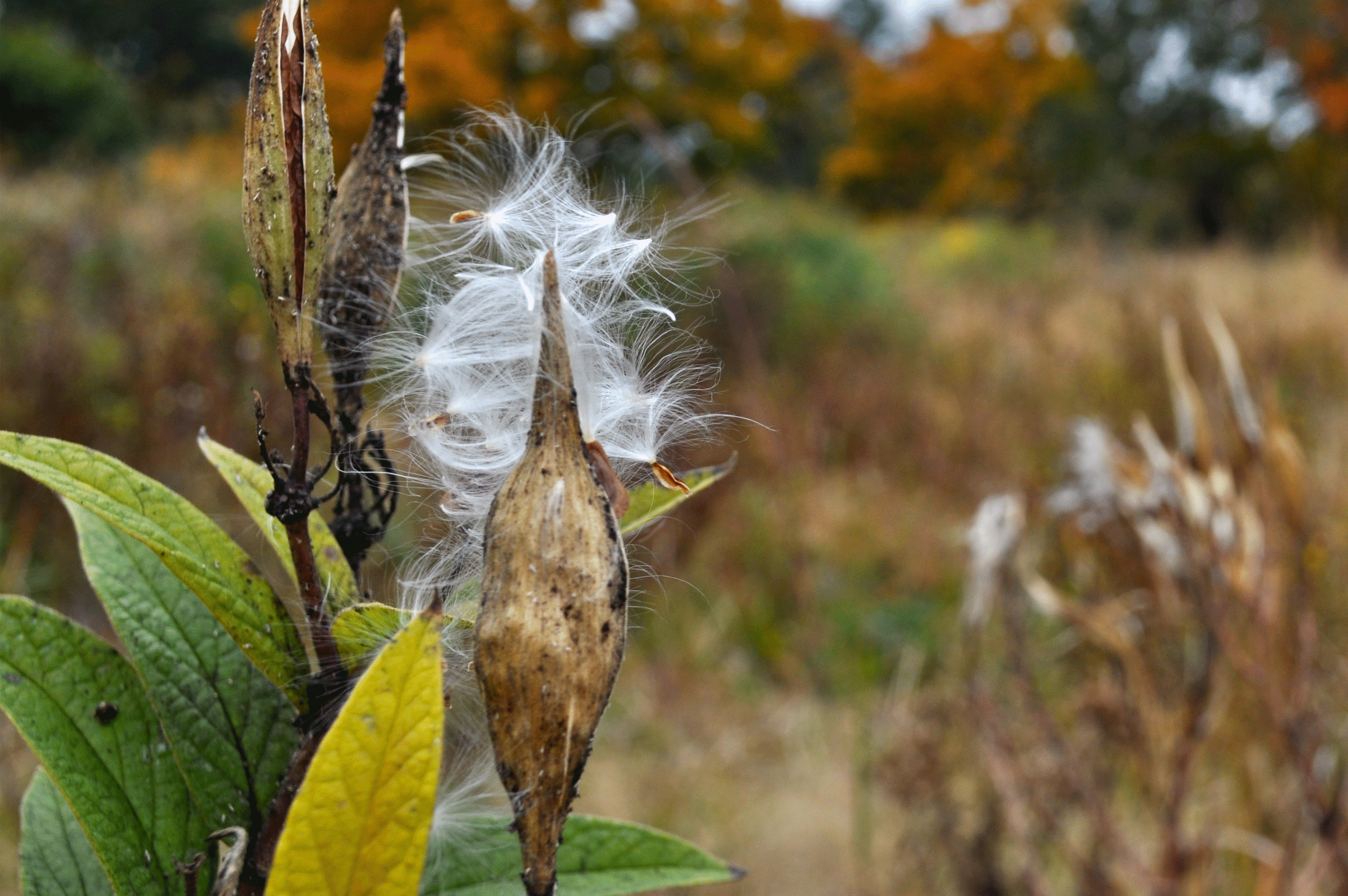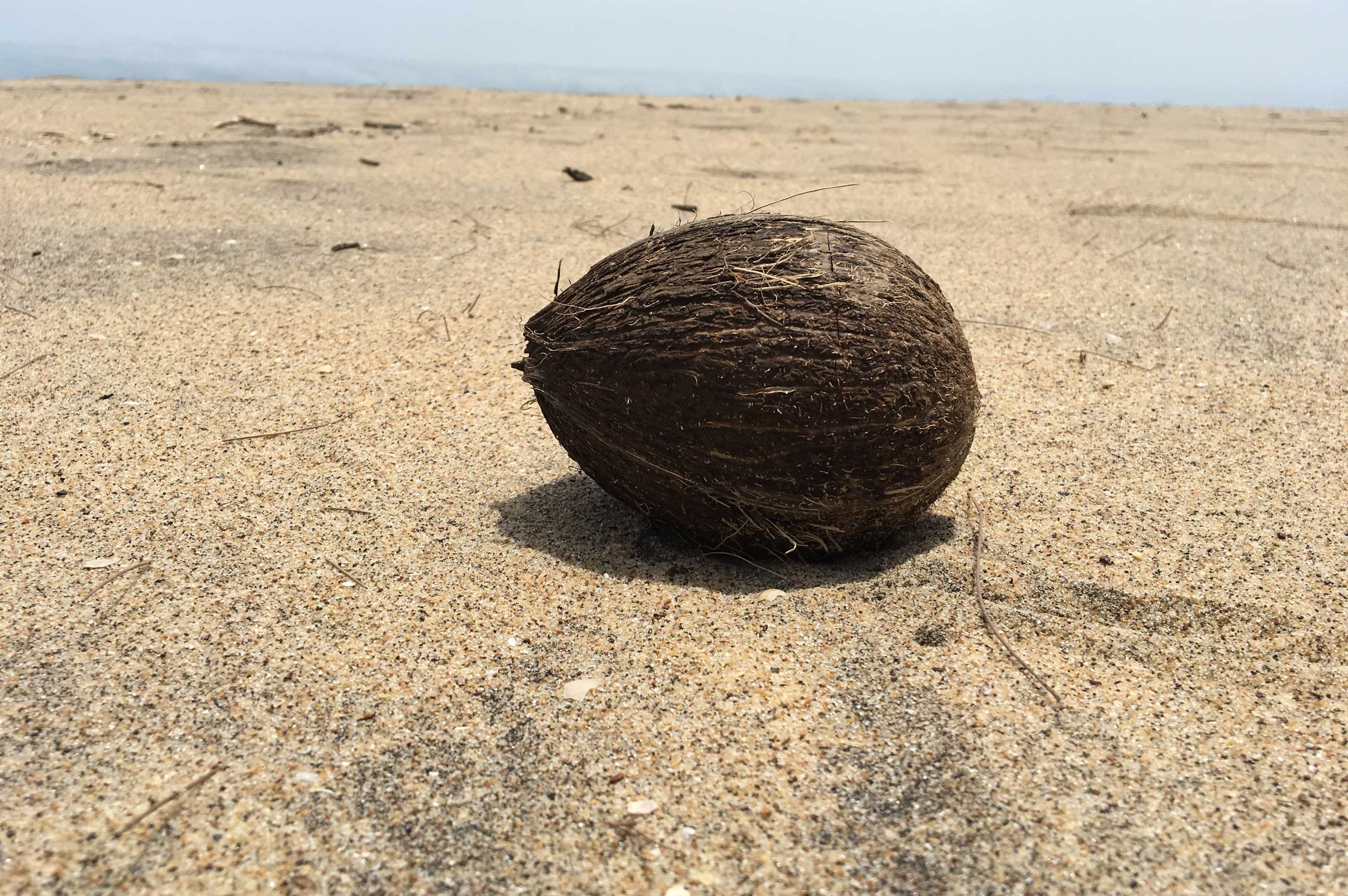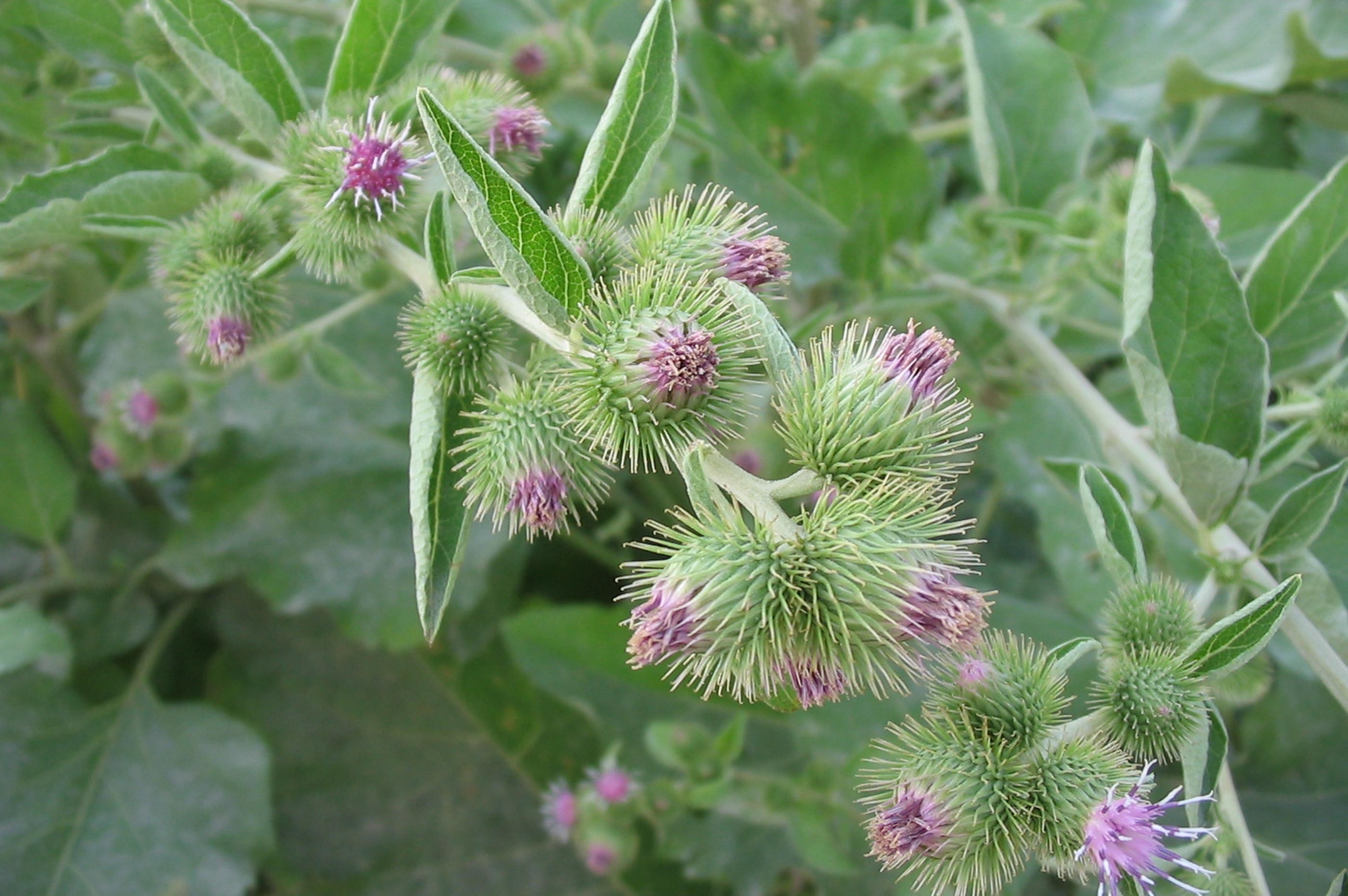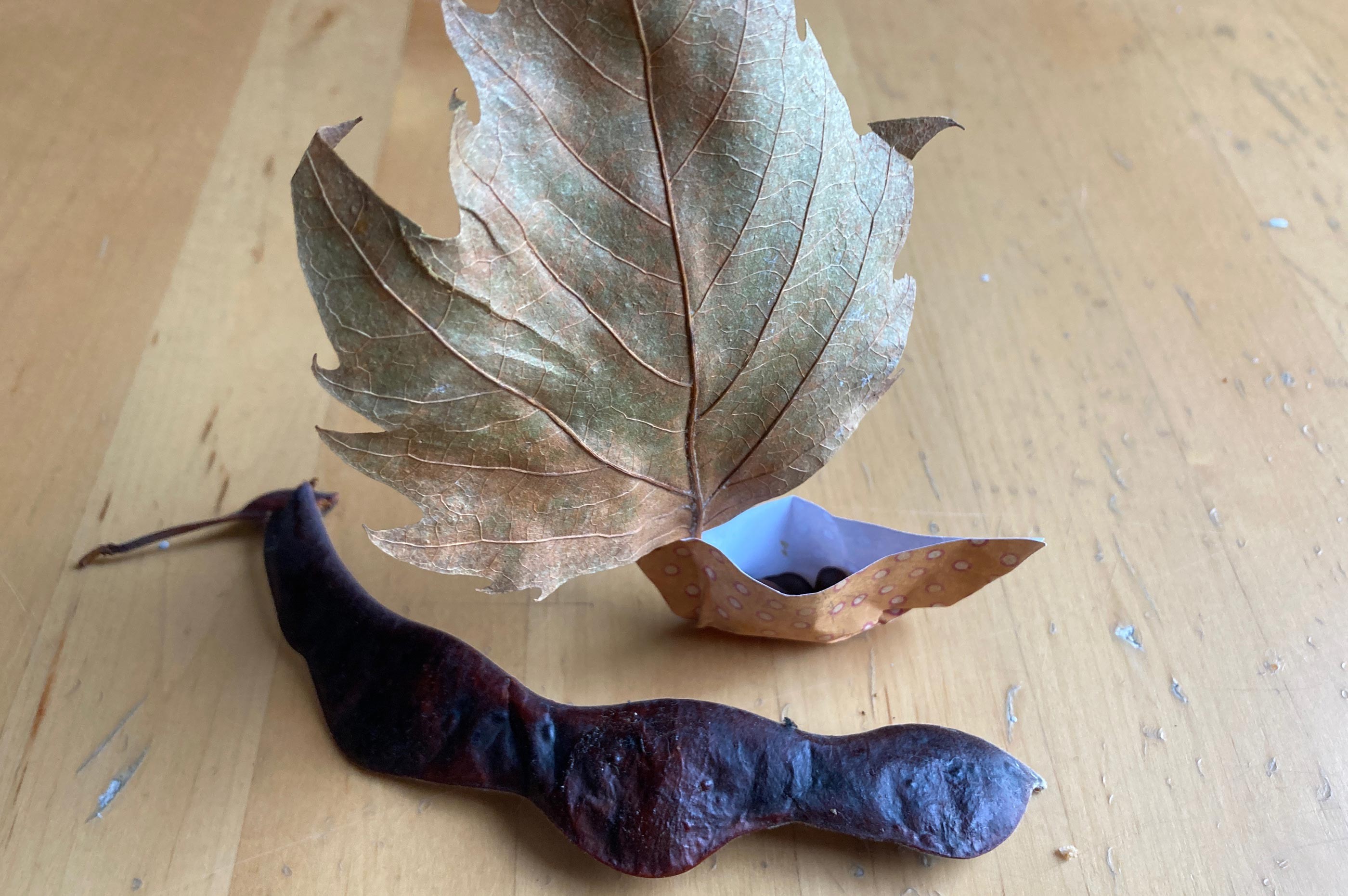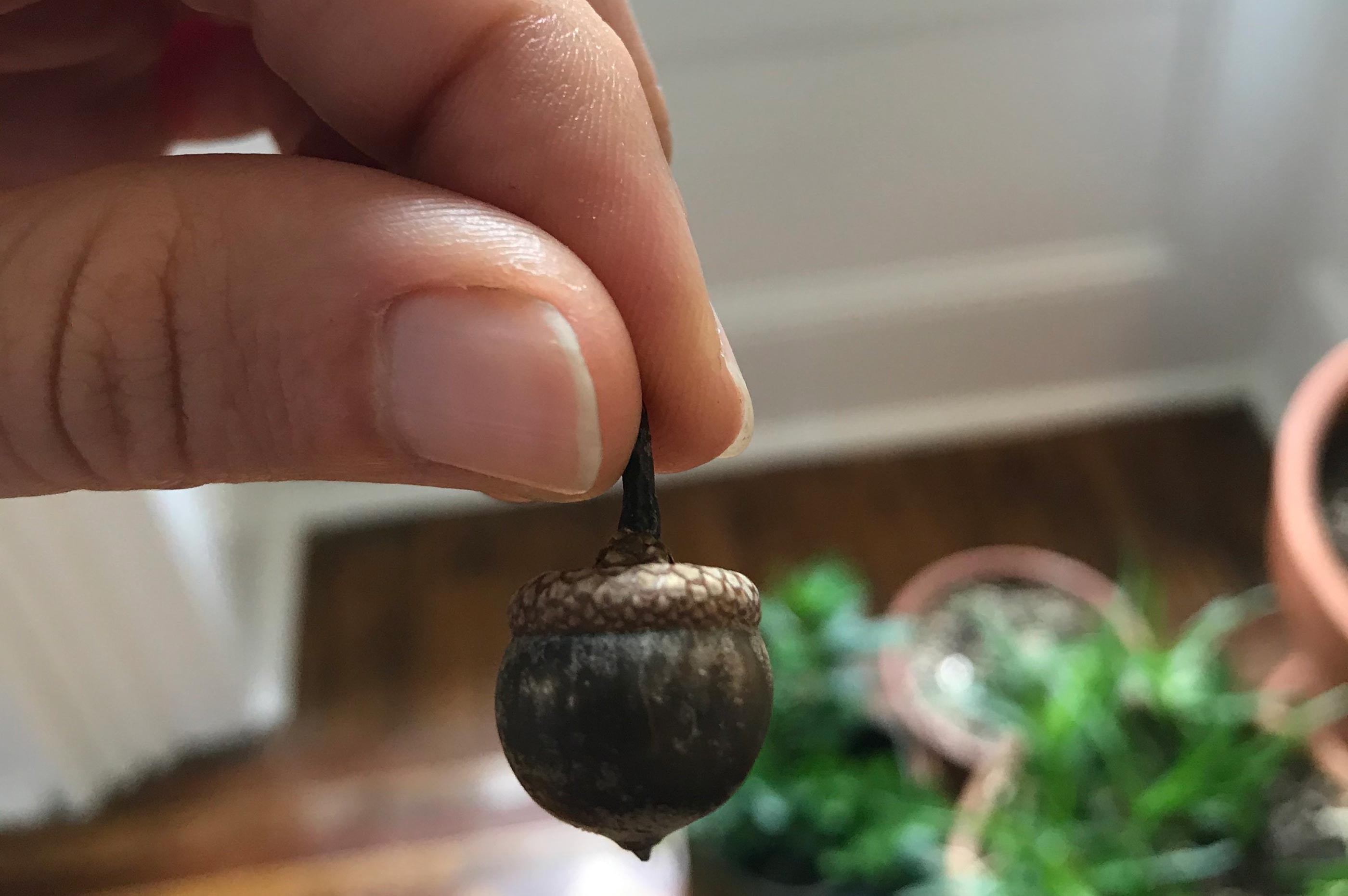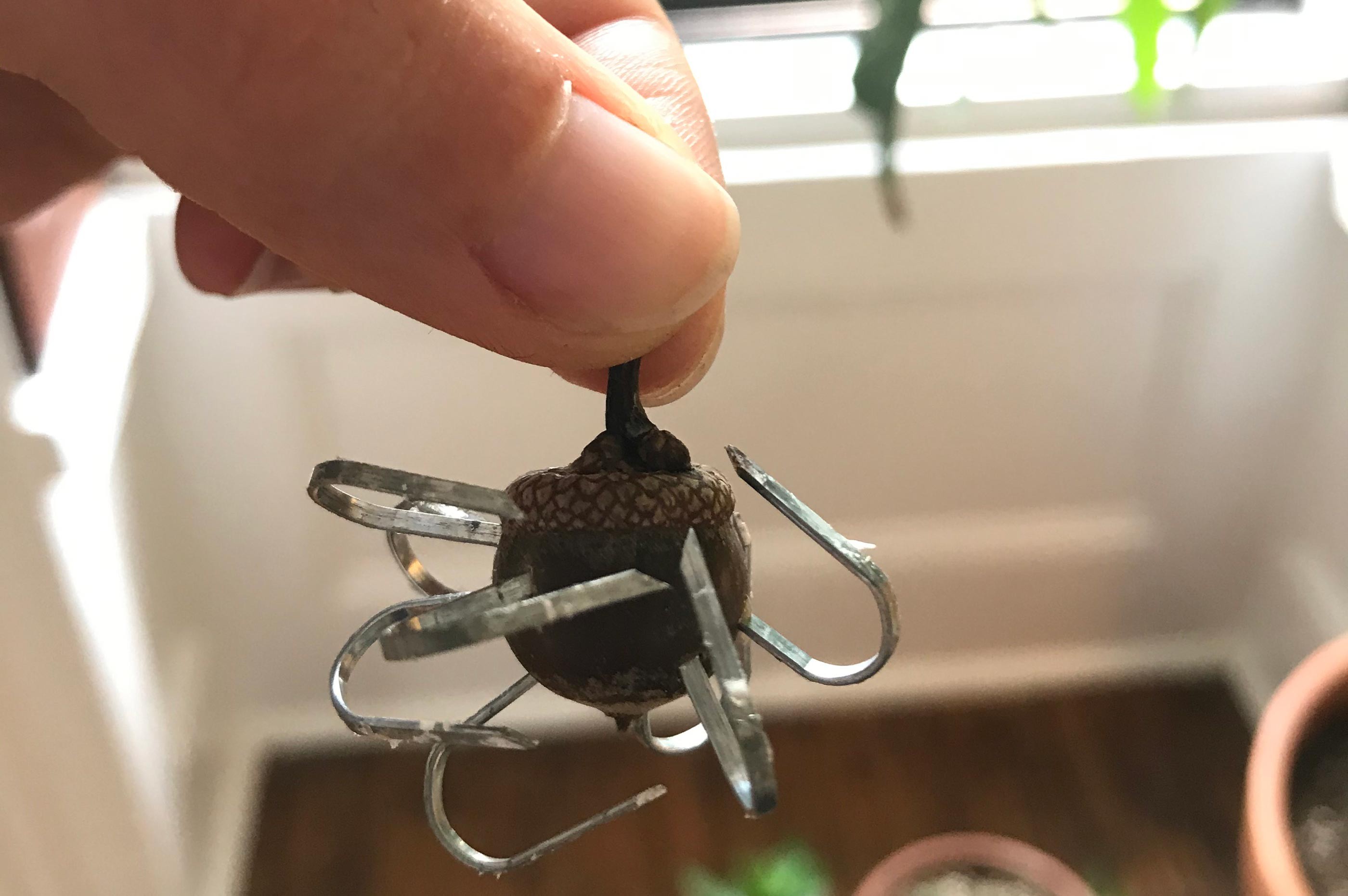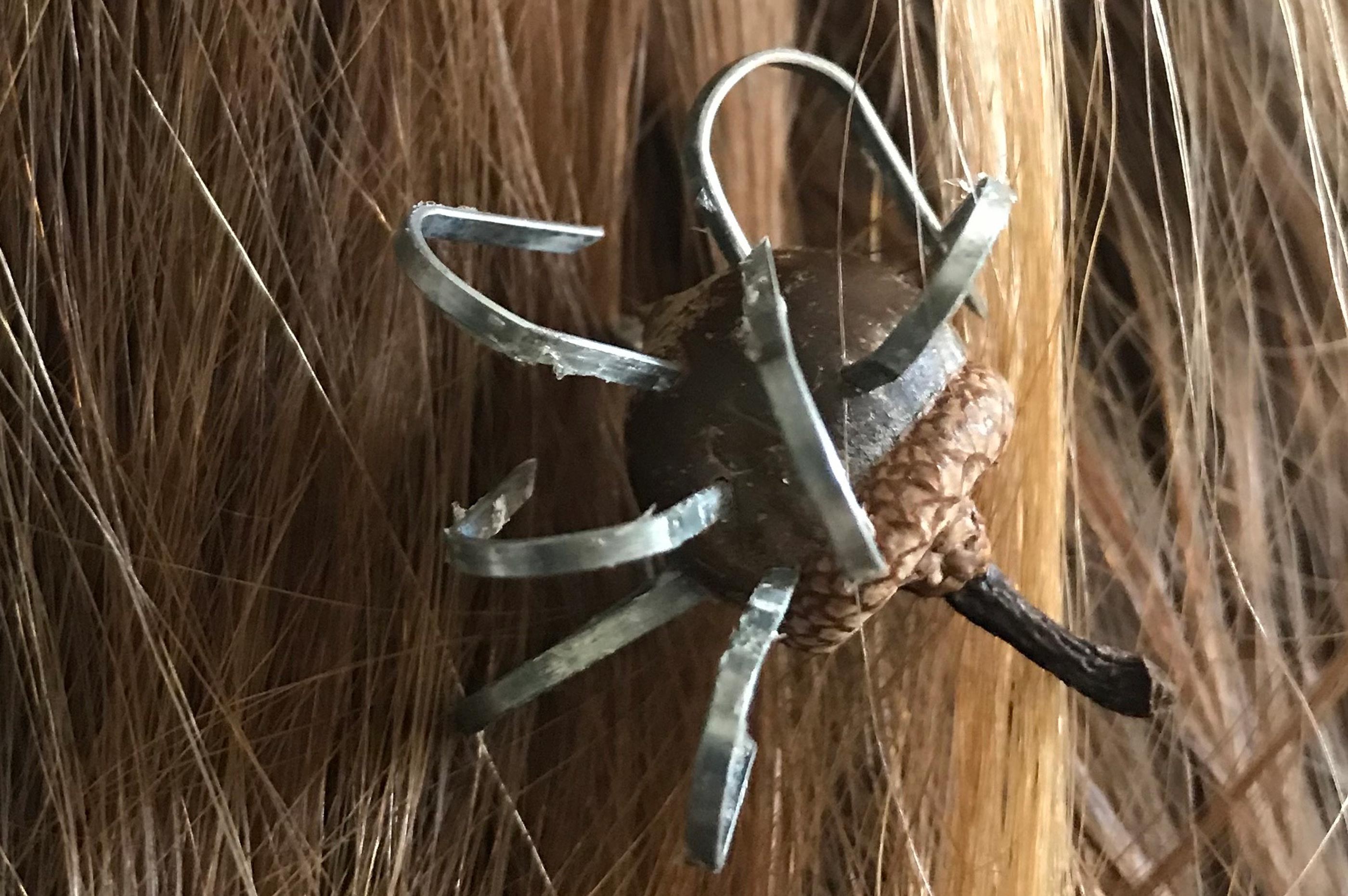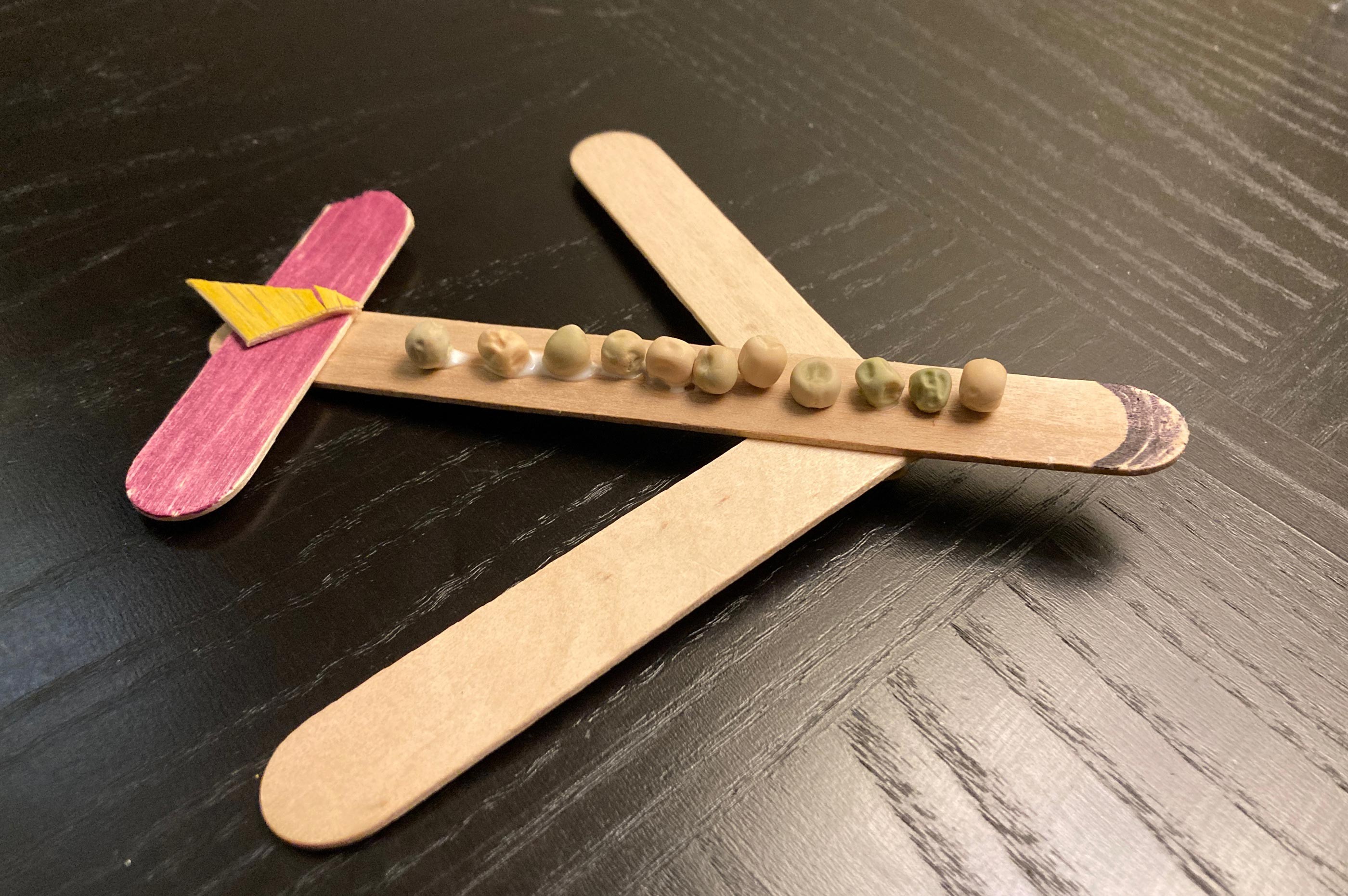Have you ever wondered how seeds manage to get from place to place so new plants can grow everywhere?
Inside a seed is a plant-to-be (embryo) that will grow into a new plant under the right conditions. Seeds must travel far enough away from other plants that they won’t have too much competition for space, light, water, nutrients, and other things they need grow. This is called seed dispersal. Over time, fruits and seeds have developed adaptations that allow them to be carried from place to place in order to become the next generation of plants.
Plants rely on wind, water, animals, and even people to help spread their seeds.
Air Travel
Some seeds have wings, feathery parts, or even parachute-like parts to help them float in a breeze instead of dropping to the ground below the parent plant. This time of year, you might see maple samaras on the ground or in maple trees. These seeds have a propeller-like part attached that causes the seed to spin while being carried by the wind. Other plants have fluffy parts attached to their seeds that help them fly long distances, like the seeds of milkweed or dandelion.
Drifting Along
Did you know a coconut is considered one of the largest seeds in the world? It’s a good example of a drift seed, a seed that has adapted to float in water, sometimes traveling across oceans from island to island. A coconut has an air pocket inside that allows it to float, and a thick husk to protect it from predators and the salty ocean water.
Since this seed needs to travel long distances, it’s full of sweet water and nutritious white coconut meat to help nourish the embryo until it arrives somewhere it can grow into a coconut tree. Drifting isn't the most common way for a seed to travel, but it seems to be more common in tropical, coastal places. Mangoes, almonds, and certain other tropical fruits and nuts have seeds that are dispersed this way.
Hitching A Ride Inside and Out
Do you like furry animals? Many plants do too! Some have small hooks or barbs that allow them to stick to an animal’s fur—or even a person’s clothes. The animal (or person) can carry the seeds long distances before they fall off and begin to grow in a new place. The seeds of a burdock plant have tiny interlocking hooks that are excellent at sticking to almost anything, and inspired scientists to create a man-made version known as Velcro!
Seeds can also travel inside an animal’s stomach! Plants with tasty fruits—like raspberries and apples, to name just a couple—spread when animals like birds, deer, raccoons, or bears eat the fruit along with the seeds. The animal travels with the undigested seeds inside it and then poops them out somewhere else!
Design Your Own Seed Transportation Method
Can you make a traveling seed? Will it travel by air, water, or animal? Use common household materials to make and test your very own seed.
Materials:- seed or seeds (bean, acorn, pumpkin, or any other seeds you find)
- tape or glue
- craft supplies or recycled materials like paper, tinfoil, balloons, feathers, pipe cleaners, or clay
- bowl of water
- fan (optional)
First, think about how you would like your seed to travel. What parts does it need to do this?
Next, start building. Attach materials to your seed to create the parts it will use to get around.
Finally, test your seed! See if your seed will stick to your hair or sweater, float in the bowl of water, or fly in the breeze. You can test this by holding your seed in front of a fan or just holding it up high and letting go.
Does your seed do more than one? All three? What if your seed does not do any of the three? Is there another way it might travel? How do you think the seed dispersal method you designed compares with the one that really evolved in that plant species?
Go on a Garden Quest and learn more! Each quest includes a short video, Garden exploration, and at-home activity.


